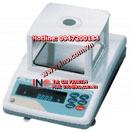Vui lòng liên hệ với chúng tôi– chúng tôi sẽ liên hệ lại với khách hàng bằng điện thoại hoặc email.
Lưu ý: Tham khảo ý kiến của nhân viên INO sẽ giúp bạn tiết kiệm được thời gian và chi phí khi cần mua sắm. Với sự tư vấn của chúng tôi, bạn sẽ không gặp khó khăn khi tìm hiểu về đặc tính của sản phẩm cần mua.
Newly designed high-sensitivity NDIR achieves ultrahigh sensitivity measurements.
Sensitivity and accuracy enhanced by minimizing the reagent blanks that hinder accurate analysis.
Powerful oxidation through a combination of peroxosulfuric acid, UV illumination, and heating.
No need of purging of reagent bottle reduces consumption of carrier gas
Measurement Principle
TC Measurement
Phosphoric acid and the oxidant (persulfate) are added to the sample, which is heated under UV illumination to convert the TC in the sample to carbon dioxide. This carbon dioxide flows with the carrier gas via the dehumidifier into the NDIR sample cell. The area of the carbon dioxide peak signal is measured and this peak area is converted to TC concentration using a pre-prepared calibration curve.
IC Measurement
The sample is acidified with phosphoric acid and sparged to convert the IC in the sample to carbon dioxide. This carbon dioxide is detected by the NDIR and the sample IC concentration is measured in the same way as TC.
TOC Measurement
Subtracting the IC concentration from the TC concentration determines the TOC concentration.
NPOC Measurement
The sample is acidified with phosphoric acid and sparged to eliminate the IC. The NPOC concentration is determined by measuring the TC (=NPOC) of the sample after the IC is eliminated, using the same method as for TC measurement.
Features of S model
The combination of simple, easily operated keyboard and large LCD makes these models easy to use.

A separate window for each measurement condition setting item enhances clarity and ease of input.

Helpful operation guides are displayed.
Frequently used functions such as calibration, measurement, and ASI measurement are assigned dedicated keys to reduce operations.
The method function registers measurement conditions.
Features
Automatic setting of optimal measurement conditions
When creating the calibration curve, the optimal measurement conditions are displayed when the standard solution concentration is set. Detailed calibration curve information can easily be referenced when setting the measurement conditions.
Automatic condition changing and re-analysis of out-of-range samples
If the sample peak goes over the calibration curve range, measurement conditions such as dilution rate and injection volume are automatically changed and the analysis is repeated.
Automatic selection of the best calibration curve
Up to three calibration curves can be set for sample measurement. The optimal calibration curve is selected for the sample and the sample measurements are conducted using these measurement conditions.
Automatic exclusion of anomalous values and re-calculation of repeated analyses
The mean value, standard deviation, and coefficient of variation are displayed and printed during repeated analyses. Anomalous values can be automatically eliminated and re-calculated.
Convenient automatic power off function
Automatic power off after electric furnance cools down ensures power is not left on and saves energy.
Comprehensive calibration system handles many uses
When creating the calibration curve, the optimal measurement conditions are displayed when the standard solution concentration is set. Detailed calibration curve information can easily be referenced when setting the measurement conditions.
Automatic condition changing and re-analysis of out-of-range samples
If the sample peak goes over the calibration curve range, measurement conditions such as dilution rate and injection volume are automatically changed and the analysis is repeated.
Automatic selection of the best calibration curve
Up to three calibration curves can be set for sample measurement. The optimal calibration curve is selected for the sample and the sample measurements are conducted using these measurement conditions.
Automatic exclusion of anomalous values and re-calculation of repeated analyses
The mean value, standard deviation, and coefficient of variation are displayed and printed during repeated analyses. Anomalous values can be automatically eliminated and re-calculated.
Convenient automatic power off function
Automatic power off after electric furnance cools down ensures power is not left on and saves energy.
Comprehensive calibration system handles many uses
- Calibration curve can be created to compensate for TC in water used for standard solution adjustment.
- A maximum of 25 (model S. model P has no limit) calibration curves can be stored and recalled. All calibration curve data can be displayed and recorded.
Features of P model
Wizards allow simple input of measurement and calibration settings.

Comprehensive security functions such as password input and operator access restrictions.

All information is stored as files in the personal computer for reference and re-use.
The measurement conditions and results can be output to EXCEL or other application software or input from other application software.
Features
Automatic setting of optimal measurement conditions
When creating the calibration curve, the optimal measurement conditions are displayed when the standard solution concentration is set.
Detailed calibration curve information can easily be referenced when setting the measurement conditions.
Detailed calibration curve information can easily be referenced when setting the measurement conditions.
Automatic condition changing and re-analysis of out-of-range samples
If the sample peak goes over the calibration curve range, measurement conditions such as dilution rate and injection volume are automatically changed and the analysis is repeated.
Automatic selection of the best calibration curve
Up to three calibration curves can be set for sample measurement. The optimal calibration curve is selected for the sample and the sample measurements are conducted using these measurement conditions.
Automatic exclusion of anomalous values and re-calculation of repeated analyses
The mean value, standard deviation, and coefficient of variation are displayed and printed during repeated analyses.
Anomalous values can be automatically eliminated and re-calculated.
Anomalous values can be automatically eliminated and re-calculated.
Convenient automatic power off function
Automatic power off after electric furnance cools down ensures power is not left on and saves energy.
Comprehensive calibration system handles many uses
- Calibration curve can be created to compensate for TC in water used for standard solution adjustment.
- A maximum of 25 (model S. model P has no limit) calibration curves can be stored and recalled. All calibration curve data can be displayed and recorded.
PC specification required
| CPU | 233MHz or more |
|---|---|
| Memory | 32M or more |
| HDD | 2G or more |
| OS | Windows 95, Windows 98, Windows 2000, Windows Me, Windows NT4.0 (SP3 or after) |
| Monitor resolution | 800 x 600 or more, 1024 x 768 (recommended) |
Lưu ý: Nếu một thiết bị nào đó không được liệt kê ở đây, điều đó không có nghĩa rằng chúng tôi không hỗ trợ được bạn về thiết bị đó. Hãy liên hệ với chúng tôi để biết danh sách đầy đủ về thiết bị mà chúng tôi có thể hỗ trợ và cung cấp.
INO: Bán, Báo giá, tư vấn mua sắm và cung cấp, tư vấn sản phẩm thay thế; tương đương, hướng dẫn sử dụng, giá…VNĐ, …USD info@vnation.com.vn | Sales: +84 0939021319 | Shimadzu-TOC (Model:VWS/VWP).





















